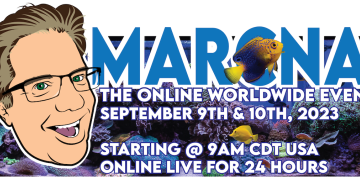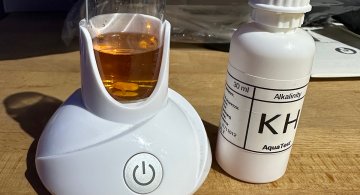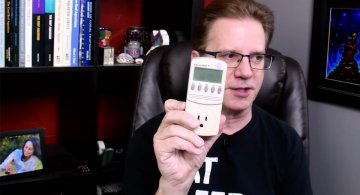A visit, a wireless toy, a working solution, and a change
It is definitely time for an update.
Earlier this month, Eric Borneman came up from Houston to present a very interesting workshop to the DFWMAS members. About 50 people showed up to find out that it is very hard to determine what kind of coral they may have, even if you take a section, dip it in bleach and study it under a microscope. Eric brought along many books and a CD that helps hobbyists rule out various characteristics in an effort to figure out what the coral is, via skeletal study. It takes a lot of time, and was an interesting exercise.
Our club meeting was about lighting this month, and I put together a power point presentation about the many options we have today. I also brought along all the props I could to help explain what is what, how it works, and what to watch out for. Lighting is a somewhat complicated topic, and hopefully the ~100 that attended feel a little more enlightened. (Sorry, I couldn't resist.)
I recently purchased a couple of new gizmos. One is this Pinpoint Wireless Thermometer that allows me to check on the tank temperature from my desk or the Reefcast Studio.
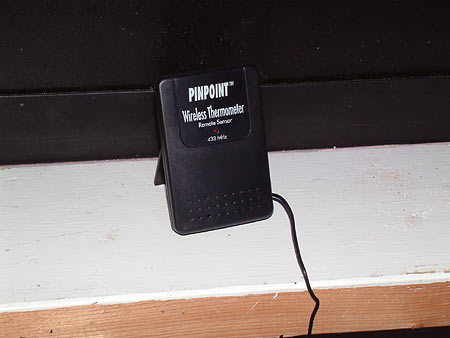

Also, this arrived from Woot at last. It tells me the current humidity level in the fish room.

A couple of weeks ago, I discovered that my refractometer was out of calibration, and when it was recalibrated it turns out my reef's salinity was much lower than it should have been. I had to top off with saltwater daily for 4 or 5 days to get it back up to 1.026sg / 35 ppt again. Overall, the corals seem okay, but I hope they'll get better now that salinity is on target once again.
The reef has been treated for redbugs three times with Interceptor. As far as I know now, the tank is red bug free. Here's my page about them if you want to know more.
In addition, I decided to keep the tank dark for three days in a row to kill what appeared to be dinoflagellates in the tank. This did help immensely. The refugium was full of red cyano (end to end), but after those three days it was clean and full of green macro algae as it should be. Unfortunately, there is always a casualty when trying to correct a problem. One of my oldest SPS (the blue A. millepora) and its baby colony began to RTN significantly. I fragged what I could and gave a couple of pieces to another hobbyist in the area to hopefully save some of it. The majority of it is lost, but maybe what is currently alive will start growing anew. Here's a picture of the reef the day the lights were turned back on again.
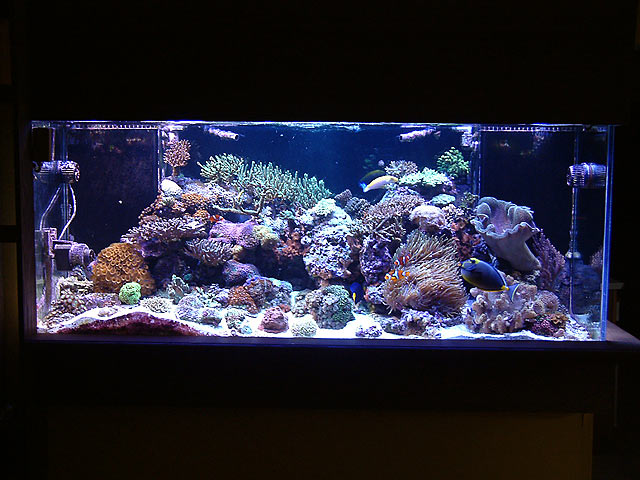
This week I started a new lighting schedule. The lights start around noon daily and are off by 10pm, but each MH bulb is only on for an average of 7 hours, staggered across the day. The idea is to similate the sun moving across the sky (a little), but moreso to not overtax the corals with an excessive lighting period. It should help lessen the electricity bill as well as summer approaches, and that would include less power consumption by the window unit working to keep the fishroom cool on a daily basis. It will take a few months to see if this makes any difference both bill-wise and livestock-wise, but I wanted to test it out and see how it goes.
Reefcast #23 should be out in the next day or so. I still need to update the site with the new show notes, and put a link to the new contest. Once that is done, the episode will be available to download.

